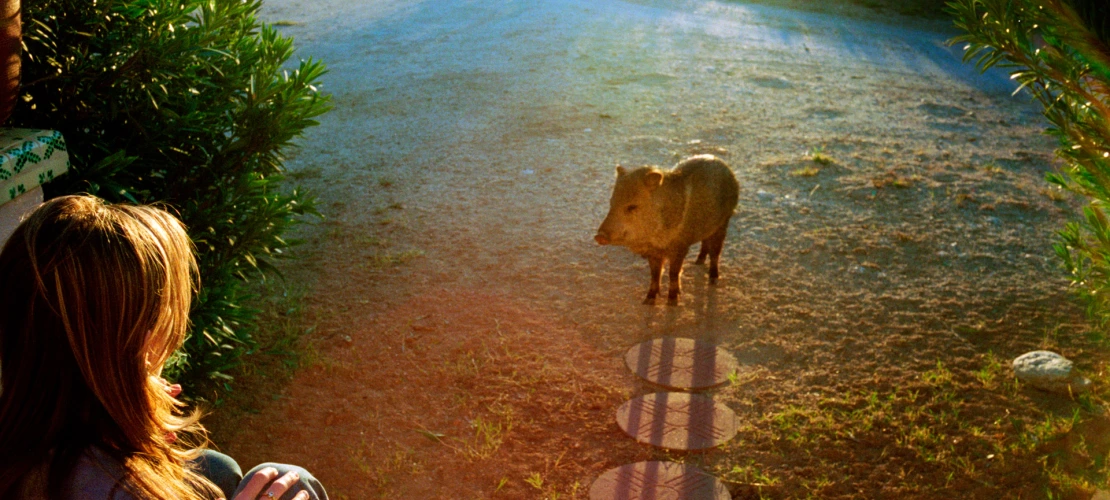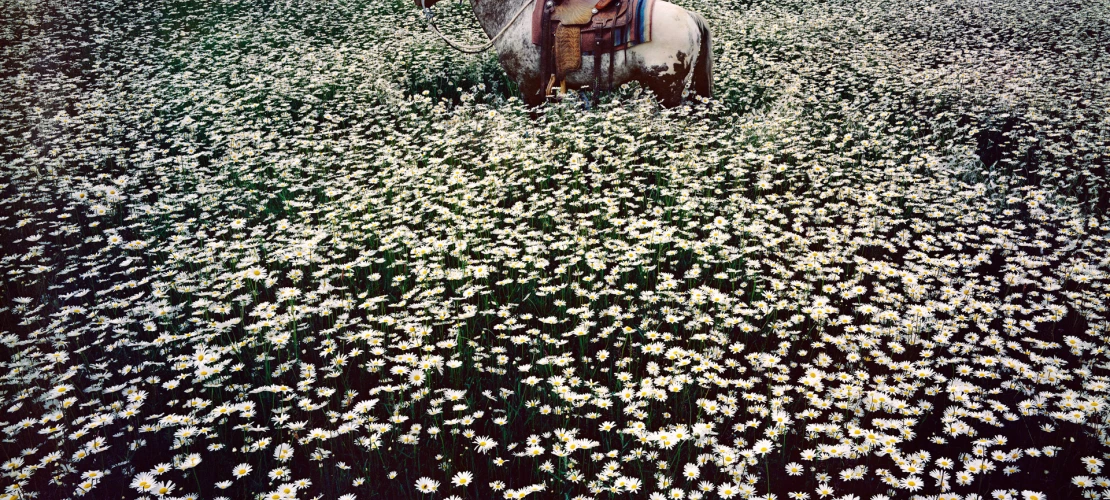The Real Person Inside
Linda McCartney’s moving images of family life and the famous are now featured in a retrospective at the Center for Creative Photography.
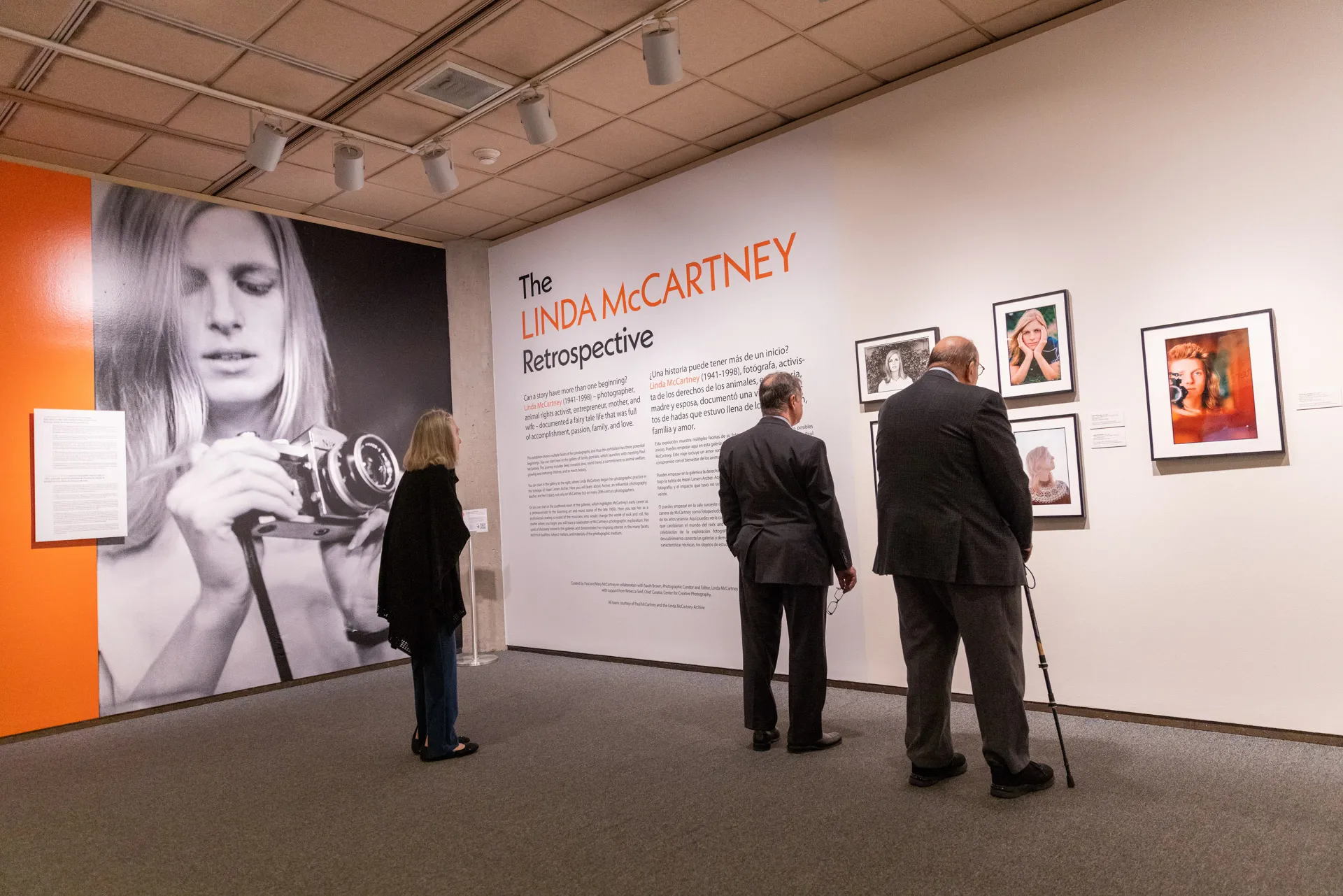
Linda McCartney Retrospective exhibition opening
Chris Richards
Linda McCartney was born and raised in New York state, but it was in Tucson that she took up the camera.
“Photography really happened when I was living in Arizona,” she once declared.
Now, the Center for Creative Photography at the University of Arizona is honoring the renowned photographer — and former UArizona student — with her first North American retrospective, 24 years after her death.
McCartney came to Tucson in the early ’60s to study art history, in an art department filled with feisty young professors. McCartney, then Linda Eastman, already knew plenty about art. Abstract impressionist painting was igniting the New York art scene, and, thanks to her lawyer father, she had met artists the likes of Willem de Kooning and Mark Rothko. But she wasn’t planning to become an artist herself.
Then, one day, a friend begged McCartney to join her at a photography class. It was to be in the evening at the lively Tucson Arts Center, the precursor to today’s Tucson Museum of Art.
McCartney had no interest in going to the class, but she finally gave in to her pal.
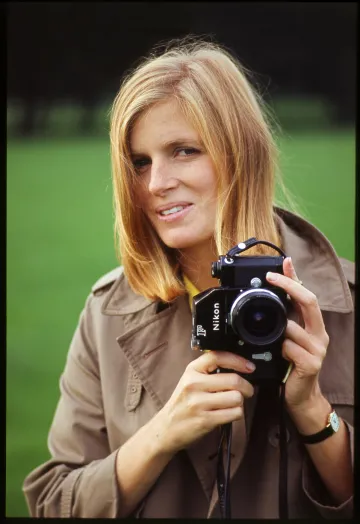
Linda by Paul. London, 1968
Paul McCartney / Photographer: Linda McCartney
“I thought it would be teaching about what a camera was,” she said years later in an interview with filmmaker Nicholas Claxton. “But it wasn’t. It was about looking at photographs. Really great photographers: Dorothea Lange, Walker Evans, Ansel Adams.”
McCartney said that Lange — famous for her wrenching pictures of the Dust Bowl — was “the biggest in my eyes. I think that whole period inspired me.”
The teacher showing these marvels was Hazel Larsen Archer, a beloved photographer who had also taught at the legendary Black Mountain College in North Carolina. Archer had made portraits of her famed students, including de Kooning, and landed a show of her work at the Museum of Modern Art. Having moved out West, Archer was devoting herself to teaching. She liked to tell her students that their job was to look — really look — at “things as they are.”
At the end of that memorable class, Archer told her charges to go forth and take pictures. When McCartney explained that she had neither a camera nor the ability to shoot one, Archer briskly replied, “Borrow a camera, buy a roll of film, and take pictures.”
The student took her teacher’s advice to heart. The next week, McCartney came back with pictures. And she never stopped making them. “Hazel,” she told Claxton, “inspired me to become a photographer.”
For her part, Archer told Claxton that McCartney “really had an eye, and it was really important that she keep on with that kind of energy.”
And she did. Even before Linda Eastman met and married Paul McCartney, she had become a sought-after professional photographer.
The Linda McCartney Retrospective opened at the CCP Feb. 25 with no fewer than 176 photos, made by the artist between 1965 and 1997.
Planning for the project started several years ago under the center’s then-director, Anne Breckenridge Barrett, but the coronavirus pandemic brought the work to a halt. Finally, last winter, Rebecca Senf ’94 and Meg Jackson Fox ’16, curators from the CCP, were able to fly to London to select photos from the private Linda McCartney Archive. The McCartney family wanted the first North American showing of the retrospective to be at the University of Arizona in Tucson.
Senf and Jackson Fox met with Sarah Brown, the photographic curator who has the monumental job of overseeing 160,000 items of Linda McCartney’s work, including original Polaroids, contact sheets and negatives. For Brown, the exhibition feels “somewhat like a homecoming for Linda’s work. Tucson is where she first picked up a camera 60 years ago; Tucson was a place very close to Linda McCartney’s heart. It’s where she took some of her favorite work.”
“We looked at the collection and then thought about ways to make it unique for Tucson,” says Senf.
The exhibition is in three main sections: rock ’n’ roll portraits, works of photographic exploration and pictures of McCartney’s family, pets and horses, and travels. Included among them are early Tucson works, some never before seen by the public.
The family portraits get the most space in the show. “These pictures with Paul and their kids are some of the most profound family photographs,” Senf says. “They’re very moving.”
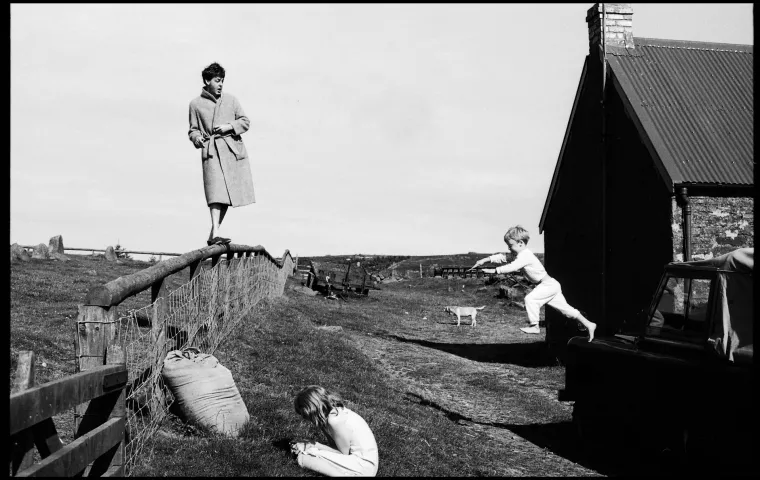
Paul, Stella and James, Scotland, 1982
Linda McCartney / © Paul McCartney
When asked for a favorite, Jackson Fox selects a picture showing Paul McCartney playing with the children at their farm in Scotland. Paul is on a fence; their son, James, is jumping from the back of a truck; and one of their daughters, Stella, is crouched in the foreground. “There’s such warmth in her work,” Jackson Fox says. “And that’s the continuity I see among all her pictures, from musicians and artists to her family.”
Staci Santa, the CCP’s interim director, would vote for “Heather and Javelina,” a lovely desert scene showing Linda and Paul’s daughter and a javelina bathed in the shadows and light of a late summer afternoon. “It’s simple, beautiful and playful,” Santa says.
Brown has a favorite, too: “Mother and Child, Corfu, 1969.” In the photo, a woman on a beach is about to pick up her daughter, who is staring right at the camera. “The more I look at the image, the more it makes me think about European paintings from the 14th and 15th centuries of the Madonna and Child. I also love the humor of the mother’s bright orange hat.”
For Senf, the choice is a portrait of Bob Dylan. The image, she says, is not what you might expect from the portrait of a rock ’n’ roll star. “I think that’s really wonderful, in part because he looks like the rest of us, such a regular guy.” McCartney, she says, had an uncanny gift for showing the real person inside the famous one. In fact, her interesting takes on musicians are what put her in business.
McCartney left Tucson for a New York bursting with new rock ’n’ roll bands on the edge of fame. At first, she worked for Town and Country magazine as an editorial assistant. She got her big break in 1966 when she shot the Rolling Stones for a press junket on the Hudson River.
After that, McCartney rapidly got assignments to photograph young rising stars, from Janis Joplin and Aretha Franklin to Otis Redding and Jimi Hendrix. Her portrait of Eric Clapton landed on the cover of Rolling Stone in 1968, making her the first woman photographer to score that coveted spot.
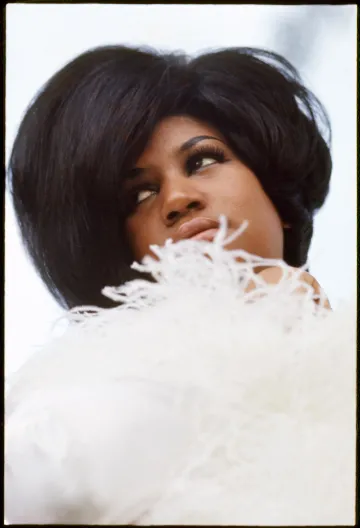
“Aretha Franklin modelling for Mademoiselle.” Los Angeles, 1968
Linda McCartney
Her life and work changed after she married Paul McCartney in 1969 and settled in the Scottish countryside. But she always had her camera at the ready for family pictures and photographs of country life, especially portraits of ordinary people she met in the shops and byways wherever she traveled. She also continued her experimental photography with Polaroid cameras and sun prints, works that are included in the CCP show.
In the 1980s, Linda McCartney turned to activism, advocating for animal rights and vegetarianism. She wrote two cookbooks filled with vegetarian recipes, “Linda McCartney’s Family Kitchen” and “Linda McCartney’s Family Recipes.”
She never lost her love for Tucson, and in 1979, the McCartneys bought a ranch on the east side of town. Linda and Paul visited the CCP at least once. The center’s archive includes a photo of them by Japanese photographer Kozo Miyoshi. In it, Paul McCartney is wearing a Wildcats cap.
One Tucson day, Linda McCartney invited Archer, her old teacher, out to the ranch. She wanted her husband to meet the woman who had taught her to look at the world through a camera lens. Archer’s daughter, Erika Zarow, who drove her mother to the house, recalls Archer and Paul McCartney spending the afternoon at the kitchen table, the former Beatle intently listening as the charismatic artist discussed the craft she and Linda McCartney shared.
The Linda McCartney Retrospective is on exhibit together with Sessions on Creative Photography: Hazel Larsen Archer, Feb. 25 to Aug. 5 at the Center for Creative Photography.

